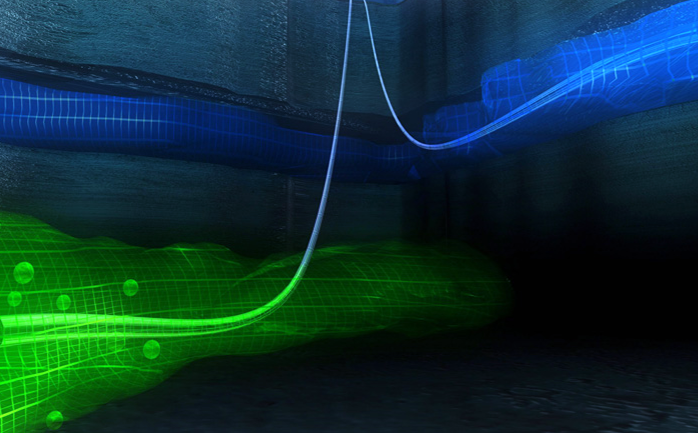
Chemical tracers are currently the only direct method of monitoring fluid movement from injector to producer. Tracer testing has become a popular tool to reduce the uncertainty of reservoir models by determining the degree of connectivity between well pairs. By combining tracer data with field production history, tracers can provide a baseline for volumetric sweep efficiency and is a critical exercise prior to beginning an EOR project. Flow quantification is carried out using mean residence time distribution analysis (RTDA) and can be used to estimate many valuable reservoir parameters.
– Breakthrough times between injector & producer
– Directional flow trends
– Identification of problematic well pairs
– Delineation of nearby faults
– Swept pore volume and sweep efficiency (Ev)
– Flow geometry (F-Φ)
ResMetrics offers a wide range of chemical tracers suitable for tracing most IOR/EOR project types. From basic waterflooding to advanced EOR injection, our chemical tracers have been screened in the laboratory and in the field for use during flooding operations. Produced fluid compatibility tests can be carried out beforehand to ensure compatibility with injection & formation fluids.
ResMetrics provides all high-pressure injection equipment required to pump the chemical tracers downhole.
ResMetrics offers unparalleled expertise in tracer test design, injection, and analysis for IOR/EOR projects. The design phase of a tracer program is critical to ensure reliable detection of the injected tracer at offset producers in the well pattern. The timing of tracer injection is of equal importance since tracer arrival will depend on the state of reservoir voidage or fill-up. Our engineering teams will provide a detailed technical proposal which will walk through all of the steps of the tracer test.
– Tracer test design and planning
– Tracer injection services
– Sample schedule generation
– Tracer analysis of produced fluid samples
– Data reporting via PetroXY web application
– Quantitative analysis of tracer data using PetroXY web application
A number of conformance improvement technologies exist that attempt to improve volumetric sweep efficiency by blocking off permeable pathways in the reservoir. These pathways create “short circuits” which cause unwanted water cycling from injector to producer. Conformance technologies typically involve the pumping of a polymer, gel, cement, foam, or resin system into the reservoir to block off thief zones and improve sweep efficiency.
However, the success of any conformance improvement project greatly depends on having a thorough understanding of the current sweep efficiency of each injector-producer pair. Chemical tracers can be utilized to establish a baseline sweep efficiency for each well pair and identify the locations of any thief zones, high permeability channels, and fractures. Conformance slug volume estimation can be carried out using RTD (Residence Time Distribution) analysis of the tracer data.